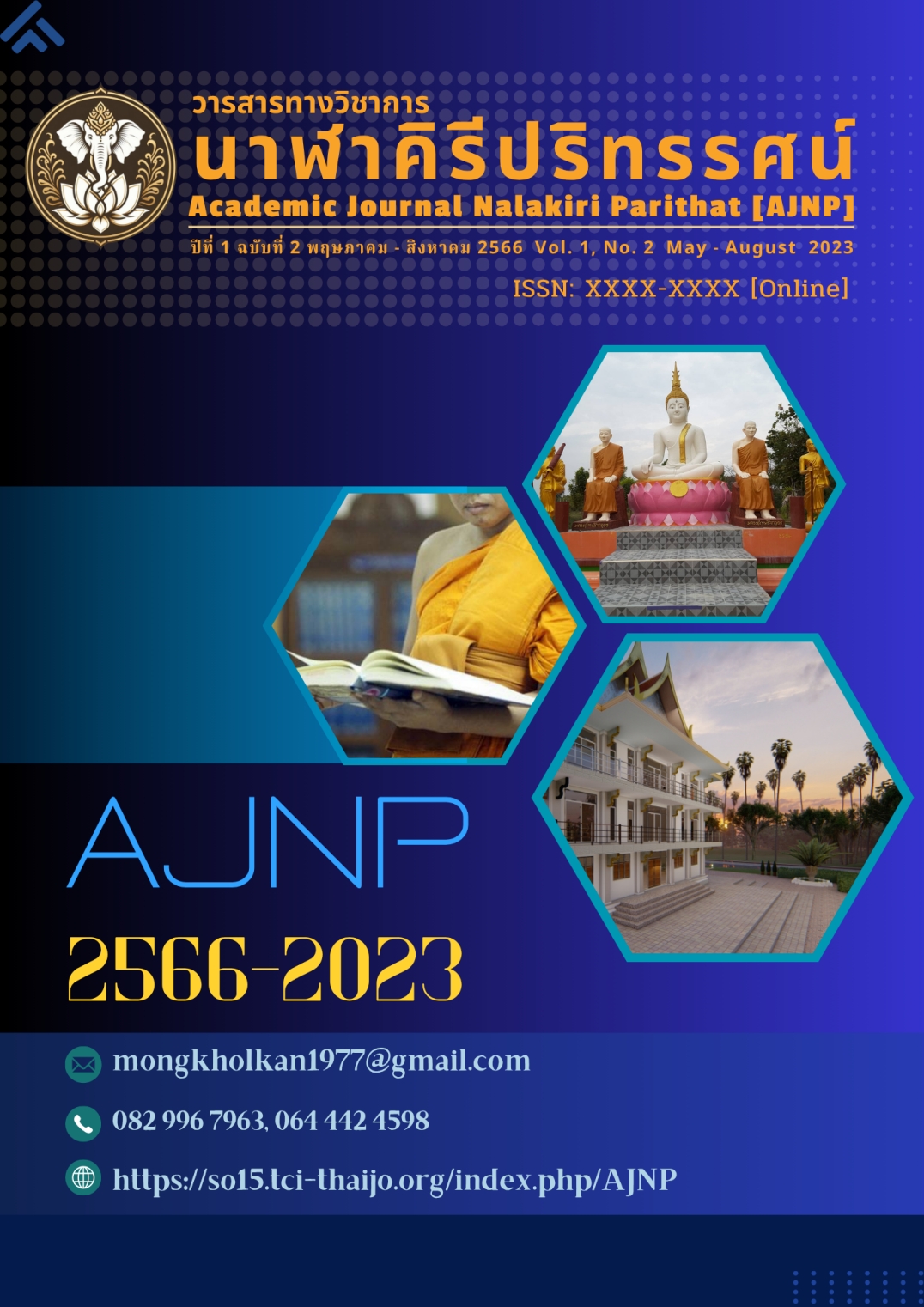ANALYSIS OF THE MIND IN THE YOGACARA SCHOOL
Keywords:
Mind, Mahayana Buddhism, Nagarjuna, YogacaraAbstract
The Yogacara sect was founded by Maitreya Naga and its disciples were Phra Asanga, Phra Vasubandhu, Phra Thinnaga, and Phra Dharmapala. The main principle of this sect is about the mind, believing that the mind is the essence of all things and that only the mind is real. Anything other than the mind is just an illusion, not real, just a reflection or a mental action. External objects cannot be proven because external objects are just illusions from the mind, existing only because of the mind's thinking. As for the mind's function, there are three things: knowing how to collect, knowing how to create, and knowing how to fabricate. Therefore, the mind is the chief and the chief of all things. The material world is just an illusion or illusion fabricated from the body of the mind. When there is no mind, nothing exists, and everything exists because there is a mind. The method of practice to reach the mind in the Yogacara sect includes practicing the principles of yoga science. It can be said that the Yogacara sect has an idealistic attitude, believing that the mind is the chief and has immense power. The highest goal of the Yogacara sect is to achieve the state of nature that is one with the Dhammakaya of the Lord Buddha.
The position of the Yogacara school is that the Yogacara school agrees with Madhyamika only on the non-existence of external objects or emotions. However, the Yogacara school disagrees with the view that the mind does not exist. The Yogacara school believes that at the very least, we must accept that the mind is something that exists. This is so that correct thinking is possible. The mind consists of various streams of thoughts as the only true thing. The Yogacara school’s principle on the mind is similar to the teachings of the Theravada that the world that the mind leads, the world that the mind veers away from, the whole world is subject to the power of only one dharma, which is the mind. It can be seen that both schools have the same opinion, but see it from different angles. Because the mind in the Theravada view is only an abstraction, a mere assumption, but does not really exist in the ultimate sense. Even the term ultimate mind is just a name for an abstraction because the mind itself is constantly arising and ceasing and is subject to the three characteristics of impermanence, suffering, and non-self. We can say that it really exists in the conventional truth, but in the ultimate truth, the mind does not really exist.
References
ยศไกร ตันสกุล. (2560). สารพันคำถามเรื่องจริงหรือเสริมแต่ง. กรุงเทพมหานคร: สยาม.
เสถียร โพธินันทะ. (2502). พระคัมภีร์กวนอิมมหาโพธิสัตว์. กรุงเทพมหานคร: ชมรมธรรมทาน.
ฉัตรสุมาลย์ กบิลสิงห์. (2543). สัทธัมปุณฑริกสูตร. กรุงเทพมหานคร: ศูนย์ไทยธิเบต.
เสถียร โพธินันทะ. (2506). พระสูตรมหายาน. กรุงเทพมหานคร: บรรณาคาร.
Downloads
Published
How to Cite
Issue
Section
License
Copyright (c) 2025 Academic Journal Nalakiri Parithat

This work is licensed under a Creative Commons Attribution-NonCommercial-NoDerivatives 4.0 International License.



